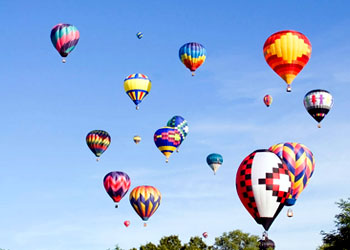 Gas balloons
Balloon carnivals which provide a great deal of entertainment are the result of inflation of balloons with the hot air. Balloonists control their crafts with the knowledge of properties of gases.
Gas balloons
Balloon carnivals which provide a great deal of entertainment are the result of inflation of balloons with the hot air. Balloonists control their crafts with the knowledge of properties of gases.
We breathe air. We feel a breeze blowing over our body. We feel the temperature of air. But with all this familiarity with air around us, we get very little idea about what is air, or why it behaves the way it does.
For solids, their behavior can be studied using laws of motion laid down by Newton. For liquids, theories could be developed to explain the static and dynamic situations on the basis of these laws. But for gases there was a problem. Newton’s laws could not be applied to thermodynamic variables like pressure, volume and temperature. Behavior of gases could be studied with thermodynamics.
Scientists later were convinced that Newton’s laws were applicable to all matter and even to gases. Although there was enough evidence to indicate that air consists of molecules with a lot of empty space between them, the problem was how to apply Newton’s laws to these molecules.
The difficulty in applying Newton’s laws of motion to the very large number of molecules was in arriving at the behavior of a system, when motion of each of the very large number of constituent particles is known. By averaging the values over the large number of molecules, relations connecting variables such as pressure and temperature of a gas to the speeds of its molecules could be obtained. Questions such as why a gas occupies the volume of its container or why an ideal gas obeys the gas law could be answered on the basis of the theory of gases.
The theory of gases, which tries to explain the gas laws and properties of gases on the basis of the assumption that molecules of gases are constantly in random motion, is called the kinetic theory of gases.